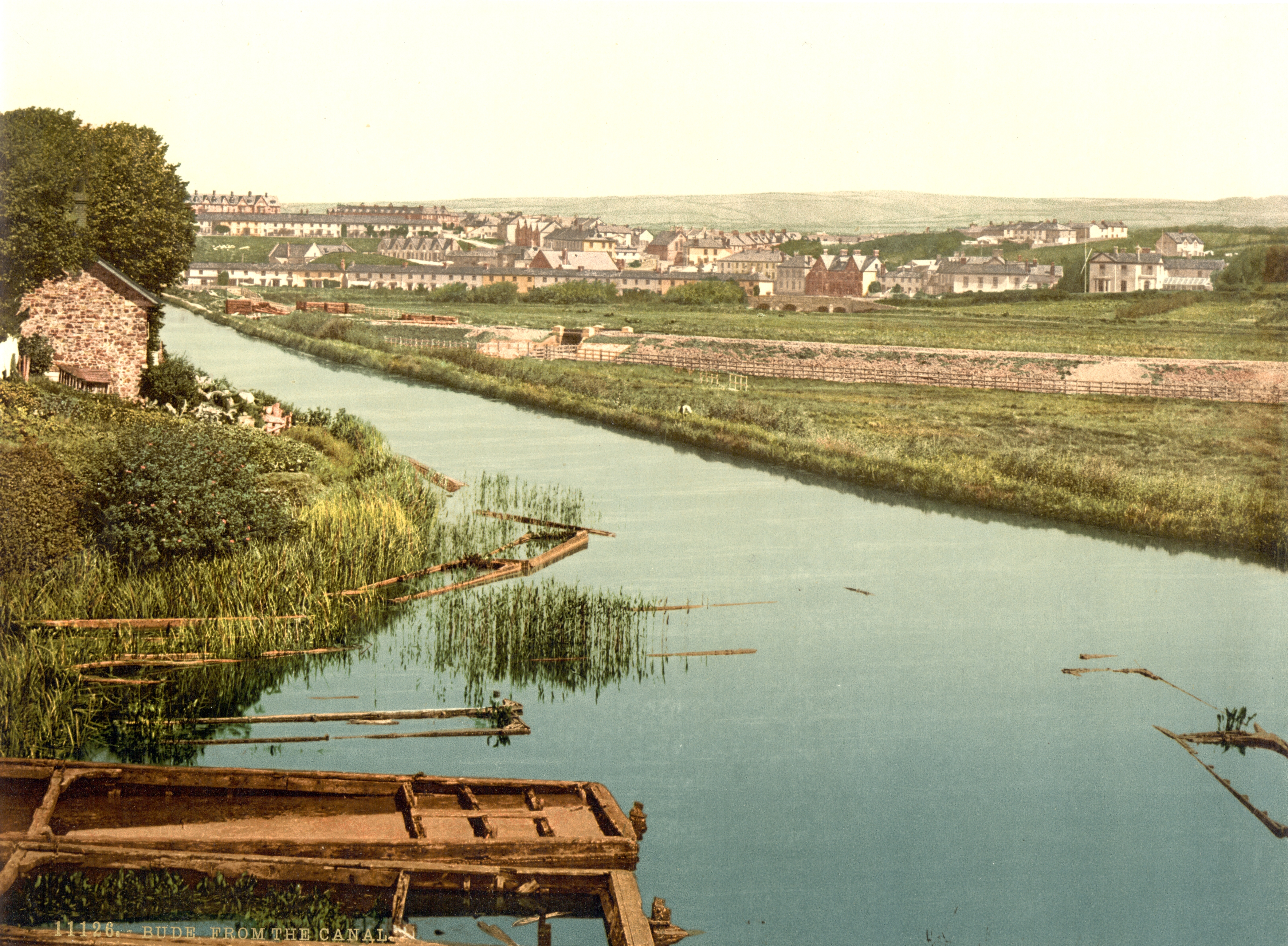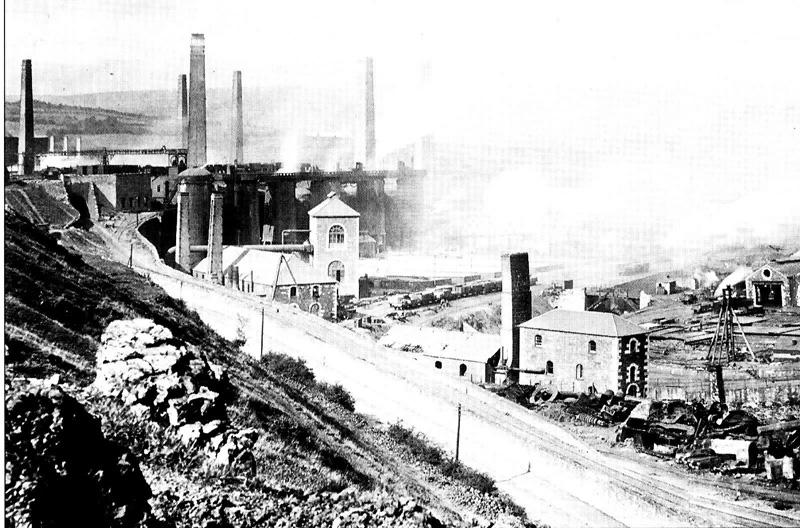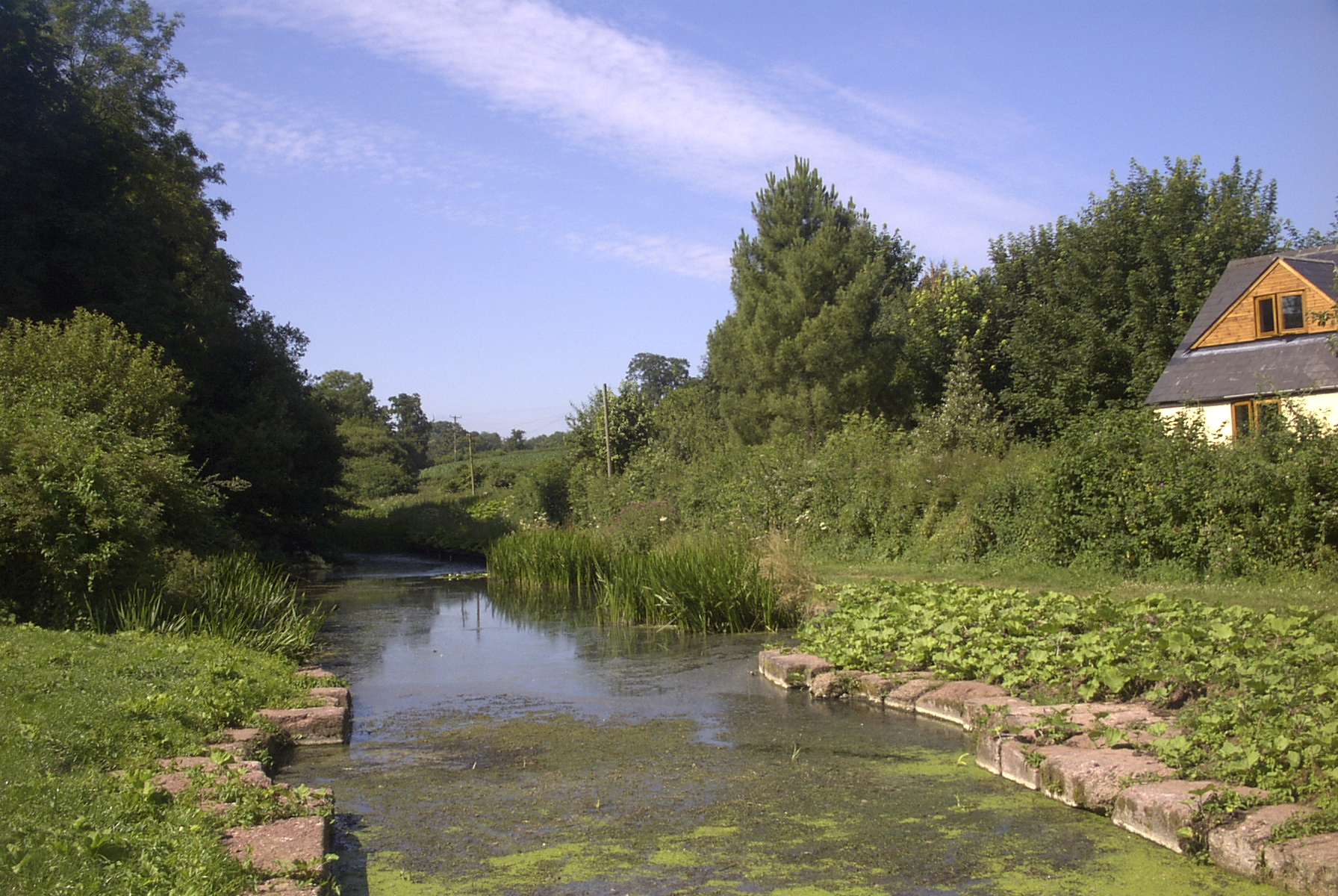|
Tub Boat
A tub boat was a type of unpowered cargo boat used on a number of the early English and German canals. The English boats were typically long and wide and generally carried to of cargo, though some extra deep ones could carry up to . They are also called compartment boats or container boats. The main virtue of tub boats was their flexibility. They could be drawn in trains of 3-10 or more boats using horse power, or later steam tugs, where the number of boats was varied according to the type of cargo. Tubs could be lifted more easily than larger boats and tub boat lifts and inclined planes were developed as an alternative to canal locks, particularly in or near a colliery or similar industrial works. At a lift the train could easily be divided, the boats lifted individually, and the train reassembled afterwards. Sometimes the boats used snug-fitting non-waterproof inner containers which could be more easily lifted out. Because of their small size, the canals that were built ... [...More Info...] [...Related Items...] OR: [Wikipedia] [Google] [Baidu] |
Tub Boats On The Bude Canal
Tub may refer to: *A tub (container): **a round or oblong container with or without a lid: ***a plant pot **a shallow, plastic or paper container, typically with a lid or closure ** Tub (unit), a former quantity for sale or butter or cheese *A bathtub, a plumbing fixture for bathing * Hot tub, a large bath or small pool designed to comfortably hold multiple persons *Quarry tub, a type of railway or tramway wagon *Slack tub, in blacksmithing, a quench *Tub boat, an unpowered cargo boat used on early canals * Twin tub, a type of washing machine * Tub file, in computing, an early, primitive random access memory technology. * Tub Welch, a baseball player. TUB may refer to: * TUB (gene) *Citroën TUB, a light van * Technical University of Berlin (Germany) * Transports Urbains du Beauvaisis, local public transport operator in northern France * Tubuai – Mataura Airport (IATA airport code) TUBS or Tubs may refer to: * Time unit box system, a system for notating events that happen over ... [...More Info...] [...Related Items...] OR: [Wikipedia] [Google] [Baidu] |
Cyfarthfa Ironworks
The Cyfarthfa Ironworks were major 18th- and 19th-century ironworks in Cyfarthfa, on the north-western edge of Merthyr Tydfil, in South West Wales. The beginning The Cyfarthfa works were begun in 1765 by Anthony Bacon (by then a merchant in London), who in that year with William Brownrigg, a fellow native of Whitehaven, Cumberland, leased the right to mine in a tract of land on the west side of the river Taff at Merthyr Tydfil. They employed Brownrigg's brother-in-law Charles Wood to build a forge there, to use the potting and stamping process, for which he and his brother had a patent. This was powered by water from the river, the race dividing into six to power a clay mill (for making the pots), two stampers, two helve hammers and a chafery. The construction of the first coke blast furnace began in August 1766. This was intended to be 50 feet high with cast iron blowing cylinders, rather than the traditional bellows. It was probably brought into blast in autumn 1767. ... [...More Info...] [...Related Items...] OR: [Wikipedia] [Google] [Baidu] |
Tarai-bune
A ''tarai-bune'' ( ja, たらい舟), or tub-turned boat, is a traditional Japanese fishing boat found mainly on Sado Island and used for catching abalone and other mollusks. The design originated from need to fish in the narrow coves formed by earthquakes. In popular culture Tarai Bune boats have appeared in: *''Spirited Away'', animated movie *''Skies of Arcadia ''Skies of Arcadia'' is a 2000 role-playing video game developed by Overworks and published by Sega. Players control Vyse, a young air pirate, and his friends as they attempt to stop the fictional Valuan Empire from reviving ancient weapons with t ...'', video game by Sega *'' Tales of Symphonia'', video game by Bandai Namco *''Tides'', video game by Shallot Games External links {{Commons categoryTarai Bune of Sado Island [...More Info...] [...Related Items...] OR: [Wikipedia] [Google] [Baidu] |
Barge
Barge nowadays generally refers to a flat-bottomed inland waterway vessel which does not have its own means of mechanical propulsion. The first modern barges were pulled by tugs, but nowadays most are pushed by pusher boats, or other vessels. The term barge has a rich history, and therefore there are many other types of barges. History of the barge Etymology "Barge" is attested from 1300, from Old French ''barge'', from Vulgar Latin ''barga''. The word originally could refer to any small boat; the modern meaning arose around 1480. ''Bark'' "small ship" is attested from 1420, from Old French ''barque'', from Vulgar Latin ''barca'' (400 AD). The more precise meaning of Barque as "three-masted sailing vessel" arose in the 17th century, and often takes the French spelling for disambiguation. Both are probably derived from the Latin ''barica'', from Greek ''baris'' "Egyptian boat", from Coptic ''bari'' "small boat", hieroglyphic Egyptian D58-G29-M17-M17-D21-P1 and similar ''b ... [...More Info...] [...Related Items...] OR: [Wikipedia] [Google] [Baidu] |
Wombridge Canal
The Wombridge Canal was a tub-boat canal in Shropshire, England, built to carry coal and iron ore from mines in the area to the furnaces where the iron was extracted. It opened in 1788, and parts of it were taken over by the Shrewsbury Canal Company in 1792, who built an inclined plane at Trench. It lowered tub boats , and remained in operation until 1921, becoming the last operational canal inclined plane in the country. The canal had been little used since 1919, and closed with the closure of the plane. History Iron ore and coal were mined at Wombridge, near to the church. In order to transport it to the furnaces at Donnington Wood, William Reynolds started to build a tub-boat canal in 1787. It was completed in 1788, at a cost of £1,640 and was long, connecting with both the furnaces and the Donnington Wood Canal. A curious feature of the canal was the tunnel which was constructed near to the church. There is no obvious reason for it, and it has been suggested that it w ... [...More Info...] [...Related Items...] OR: [Wikipedia] [Google] [Baidu] |
Torrington Canal
The Rolle Canal (or Torrington Canal) in north Devon, England, extends from its mouth into the River Torridge at Landcross 6 miles southwards to the industrial mills and corn-mills at Town Mills, Rosemoor, Great TorringtonLost canals and Waterways of Britain ''Ronald Russell'' page 96 and beyond to Healand Docks and weir on the Torridge, where survive the ruins of Lord Rolle's limekilns, upstream of today's Rosemoor Garden. Town Mills were built by Lord Rolle and were powered by a stream which flowed past his seat of Stevenstone to the east of Great Torrington and also supplied water to the canal. Rosemoor and North and South Healand farms were part of Lord Rolle's Stevenstone estate on the east bank of the Torridge. Description The canal comprises a sea lock at Landcross, a 60-foot inclined plane at Weare Giffard and an aqueduct of five arches over the River Torridge at Beam.''Industrial Archaeology'' Aids to recording (6) page 76 At the terminus of the canal at ... [...More Info...] [...Related Items...] OR: [Wikipedia] [Google] [Baidu] |
Shropshire Canal
The Shropshire Canal was a tub boat canal built to supply coal, ore and limestone to the industrial region of east Shropshire, England, that adjoined the River Severn at Coalbrookdale. It ran from a junction with the Donnington Wood Canal ascending the 316 yard long Wrockwardine Wood inclined plane to its summit level, it made a junction with the older Ketley Canal and at Southall Bank the Coalbrookdale (Horsehay) branch went to Brierly Hill above Coalbrookdale; the main line descended via the 600 yard long Windmill Incline and the 350 yard long Hay Inclined Plane to Coalport on the River Severn. The short section of the Shropshire Canal from the base of the Hay Inclined Plane to its junction with the River Severn is sometimes referred to as the Coalport Canal. Construction of the canal was completed in 1792, and it operated successfully until the 1830s. The construction and operation of the Hay inclined plane was documented by two Prussian engineers who visited it in 1826 or 18 ... [...More Info...] [...Related Items...] OR: [Wikipedia] [Google] [Baidu] |
Lydney Canal
The Lydney Canal is a one-mile canal in Gloucestershire that runs inland from the River Severn to Lydney. It was opened in 1813 to trans-ship iron and coal from the Forest of Dean. It was once connected by a horse-drawn tramroad to Pidcock's Canal which brought materials down to the wharves by tub-boat. In the 1960s imported wood was still being brought in by barge from Avonmouth. It remained in commercial use until the 1980s. The entrance to the canal consists of an outer tidal gate opening into a wide basin. From there a lock opens into the one-mile canal cut. Immediately above the lock, a pair of gates points the other way as protection against a high tidal flood in the estuary. There is one swing bridge across the canal. The docks were restored between 2003 and 2005, using money from the Heritage Lottery Fund and others, to create a marina and harbour area for seagoing yachts and motor boats. In 2015 the outer lock gates failed in the open position and are inoperable ... [...More Info...] [...Related Items...] OR: [Wikipedia] [Google] [Baidu] |
Ketley Canal
The Ketley Canal was a tub boat canal that ran for about from Oakengates to Ketley works in Shropshire, England. The canal was built about 1788 and featured the first inclined plane in Britain. The main cargo of the canal was coal and ironstone (a form of iron ore). The inclined ceased to be used in 1816, when Ketley Works was closed, but the upper canal was not finally abandoned until the 1880s. A few traces of the canal are still visible in the landscape. History The Ketley canal was constructed between 1787 and 1788 by William Reynolds of Ketley. Reynolds was born in 1758 at Bank House, Ketley, the son of the ironmaster and philanthropist Richard Reynolds. His father managed the works at Coalbrookdale from 1763 to 1768, following the death of Abraham Darby II and the coming of age of his son, Abraham Darby III. Reynolds served his apprenticeship while his father was manager, and it was a period of great innovation, including the first use of iron rails. He became the most i ... [...More Info...] [...Related Items...] OR: [Wikipedia] [Google] [Baidu] |
Grand Western Canal
The Grand Western Canal ran between Taunton in Somerset and Tiverton in Devon in the United Kingdom. The canal had its origins in various plans, going back to 1796, to link the Bristol Channel and the English Channel by a canal, bypassing Lands End. An additional purpose of the canal was the supply of limestone and coal to lime kilns along with the removal of the resulting quicklime, which was used as a fertiliser and for building houses. This intended canal-link was never completed as planned, as the coming of the railways removed the need for its existence. Construction was in two phases. A level section, from Tiverton to Lowdwells on the Devon/Somerset border, opened in 1814, and was capable of carrying broad-beam barges, carrying up to 40 tons. The Somerset section, suitable for tub boats (which were about long and capable of carrying eight tons) opened in 1839. It included an inclined plane and seven boat lifts, the earliest lifts to see commercial service in the UK ... [...More Info...] [...Related Items...] OR: [Wikipedia] [Google] [Baidu] |
Dukart's Canal
Dukart's Canal was built to provide transport for coal from the Drumglass Collieries to the Coalisland Canal in County Tyrone, Ulster, Ireland. It opened in 1777, and used three inclined planes, rather than locks, to cope with changes in level. There is little evidence that it was ever used, as the planes could not be made to work properly, and they were dismantled in 1787. History Coal seams were discovered at Drumglass, near Coalisland, in the 1690s, and the Tyrone coalfields were seen as a way to reduce the amount of coal imported to Dublin, then amounting to between 60,000 and 70,000 tons per year. Thomas Knox, an owner of one of the collieries, petitioned the Irish Parliament in 1709, to advocate the cutting of a canal to enable the resource to be transported more easily. The canal would have followed a similar route to the later Newry Canal, but nothing came of the plan, although it was well received. The scheme was revived in 1727, and assessed by the Surveyor-General in ... [...More Info...] [...Related Items...] OR: [Wikipedia] [Google] [Baidu] |
Donnington Wood Canal
The Donnington Wood Canal was a private canal in East Shropshire, England, which ran from coal pits owned by Earl Gower at Donnington Wood to Pave Lane on the Wolverhampton to Newport Turnpike Road. It was completed in about 1767 and abandoned in 1904. The canal was part of a larger network of tub-boat canals, which were used for the transport of raw materials, particularly coal, limestone and ironstone, from the locations where they were mined to furnaces where the iron ore was processed. The canal was connected to the Wombridge Canal and the Shropshire Canal. History Lord Gower, the brother-in-law of the Duke of Bridgewater, who had pioneered the canal age with his Bridgewater Canal, was the owner of limestone quarries and coal mines in Shropshire. Recognising the potential of canals for the carriage of heavy goods, he formed the Earl Gower & Company in 1764, joining forces with two land agents, John and Thomas Gilbert. Together, they planned a private canal from Lord Gower ... [...More Info...] [...Related Items...] OR: [Wikipedia] [Google] [Baidu] |







